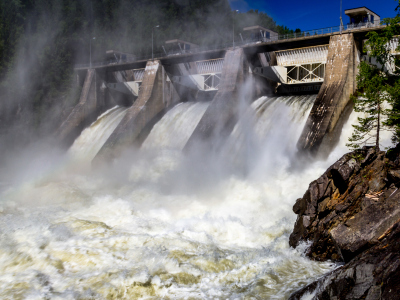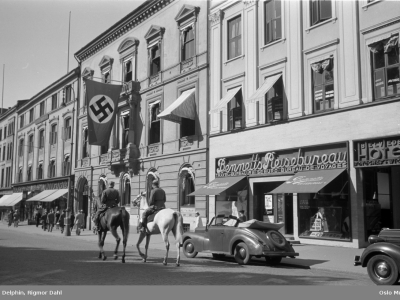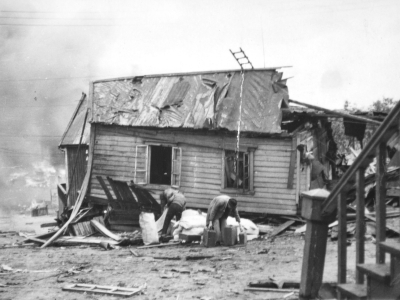World War I and World War II

World War I and World War II

Norway became an independent country again in 1905. A new era began. The population grew in the early 1900s, people moved to the cities and industry expanded.

Norway has many waterfalls, and people started using hydroelectric power to make electricity at the end of the 19th century. More factories opened, and the need for workers increased. Many people moved to the cities. Electricity was installed in some houses, street lights were introduced in cities and an electric tram network was developed in some of them. Diesel engines were installed in ships, which enabled them to travel further quicker. The first automobiles arrived in Norway.
A special act ensured that private persons could develop hydroelectric power, but the hydropower itself remained public property.
This was a busy period for the Storting. Trade unions sought better conditions for workers and applied pressure to bring about change. The Storting adopted many new laws, including that no one should work more than ten hours a day. This was reduced to eight hours in 1919. All workers were entitled to sickness benefit, which means they received money from the central government when they were ill.
Men over the age of 25 had the right to vote in general elections from the year 1898, and women over the age of 25 gained the same right in 1913.
World War I
World War I raged in Europe in the years 1914–1918. Norway did not take part in the war, but its consequences for the economy were felt here too. The war caused shortages of goods such as grain, coffee and sugar, and these goods were rationed.
Interwar years
We call the period between World War I and World War II the interwar years. As in large parts of the world, almost all of this period was marked by financial crisis in Norway. Many people were unemployed.
World War II
World War II started with the German invasion of Poland in September 1939. Norway was occupied by German forces on 9 April 1940. The fighting in Norway only lasted for a few weeks before Norway capitulated. The King and Government fled to England and continued the struggle to free Norway from there. Norway was governed by a pro-German government led by Vidkun Quisling. This government was not democratically elected.

Although little actual fighting took place on Norwegian soil, there were several resistance groups that carried out sabotage, published illegal newspapers and organised civil disobedience and passive resistance against the German occupying forces. Many people who were active in the resistance movement had to flee the country. Around 50,000 Norwegians fled to Sweden during the war. Many of them risked a great deal to help others.

In Northern Norway, many people were killed and most of Finnmark county and the northern part of Troms county were razed to the ground when the German troops evacuated these areas. On Hitler's orders, most of the buildings and infrastructure were burnt down.
Eventually, Germany started losing the war on more and more fronts, and it was forced to capitulate in May 1945. More than 10,000 Norwegians died as a result of the war.
Prior to the war, Norway had a Jewish population of around 2,100 people. Of this figure, 773 were sent to concentration camps, and only 38 survived and returned to Norway after the war.
Talk together

- Why do you think the Storting adopted laws that made life easier for workers?
- What were World War I and World War II like in your country of origin?
- Talk together about how war affects a society and the people who live there. How are human rights addressed during war?

Select the right answer
When did women get the right to vote in Norway?
Select the right answer
When were the interwar years?
Select the right answer
When did German troops occupy Norway?
Select right or wrong
Read the statements. What is right? What is wrong?
Select right or wrong
Read the statements. What is right? What is wrong?
Click on the image
Click on the right image in the timeline. When was World War II?
